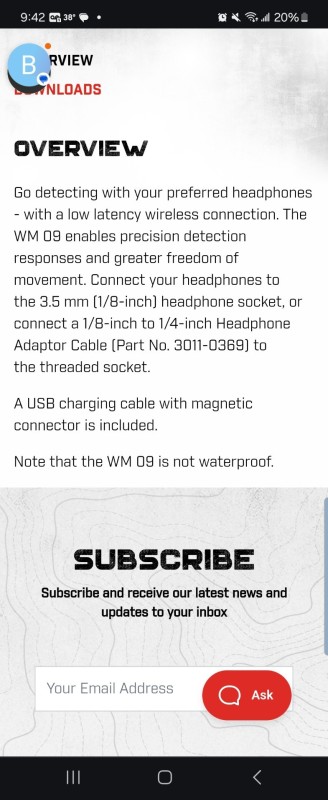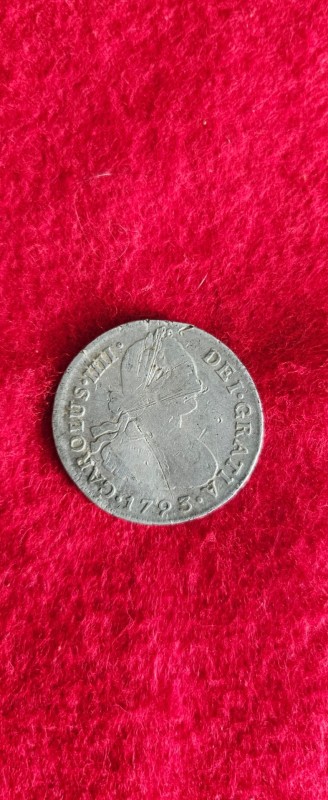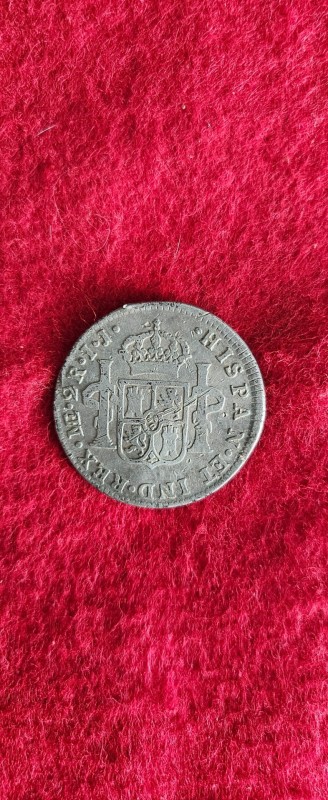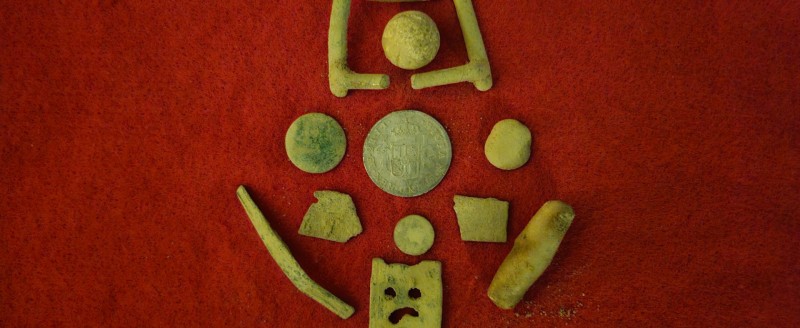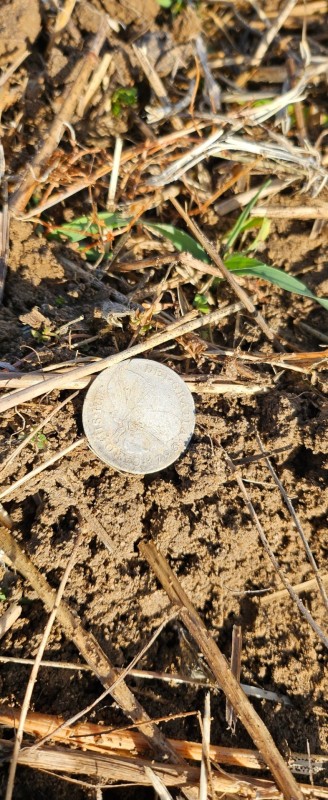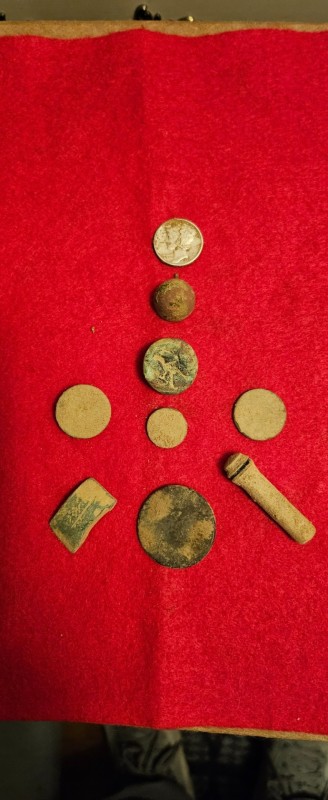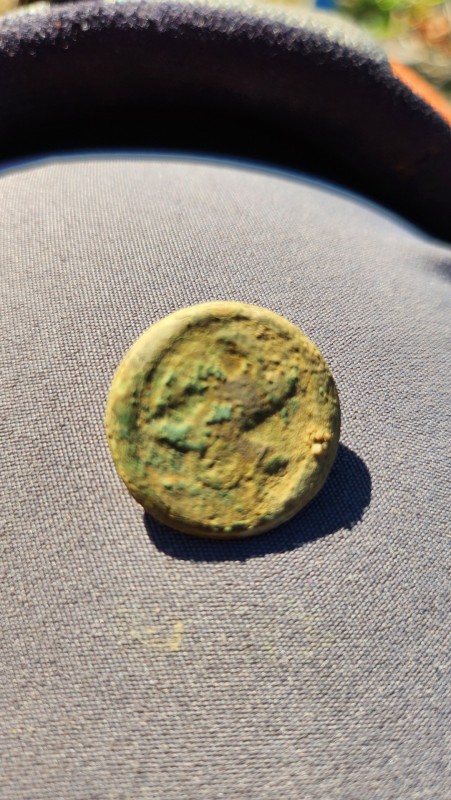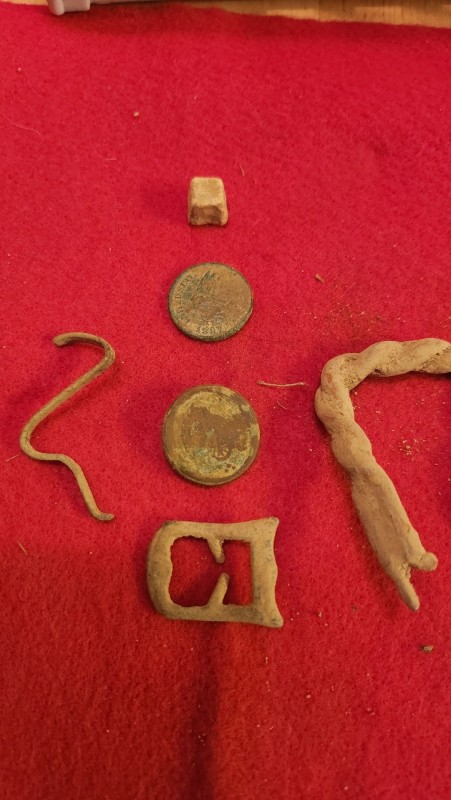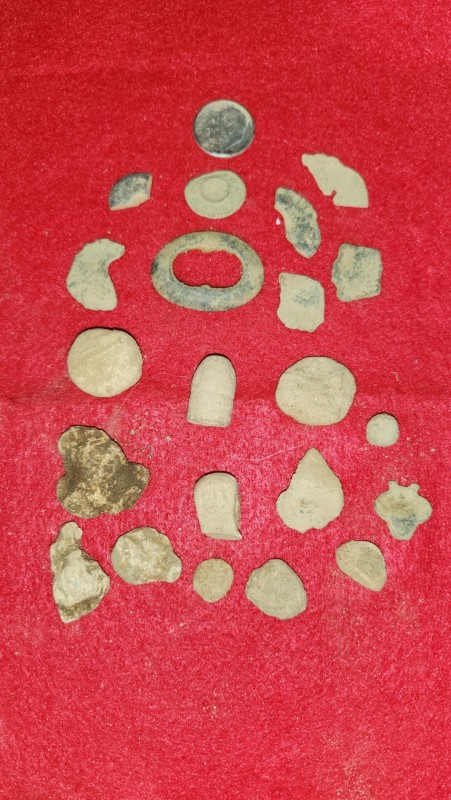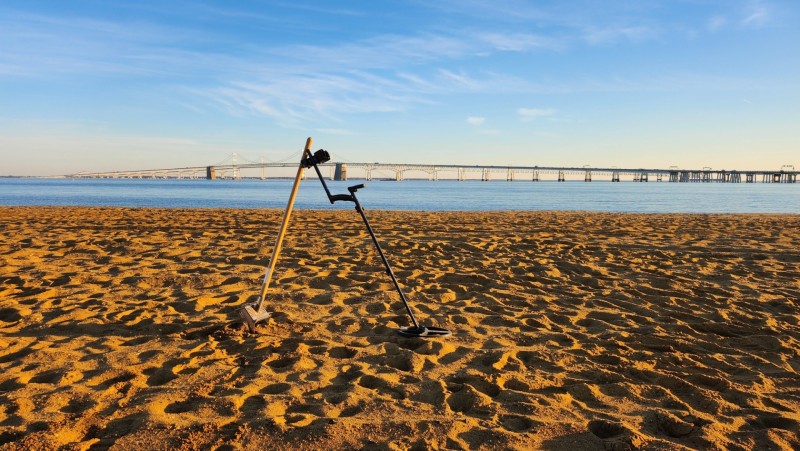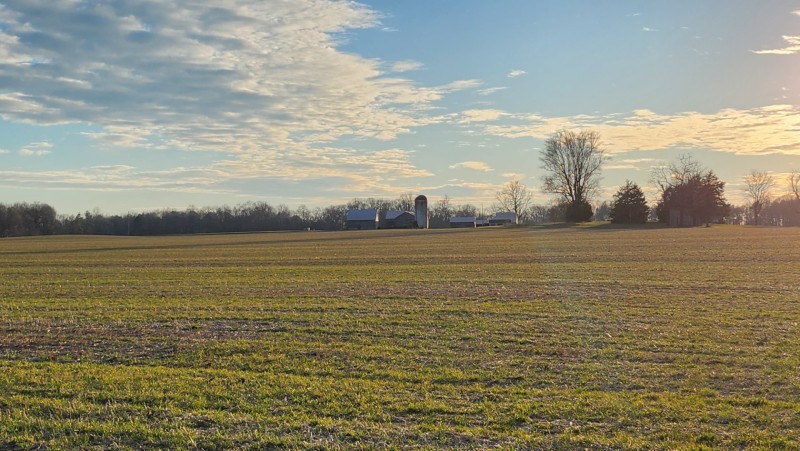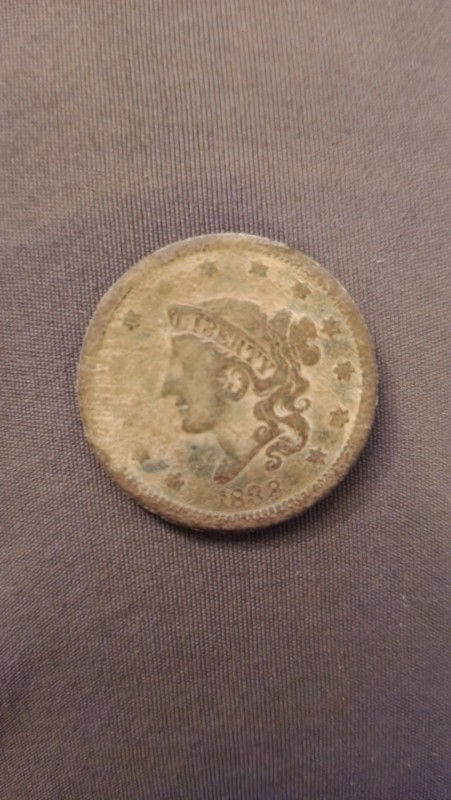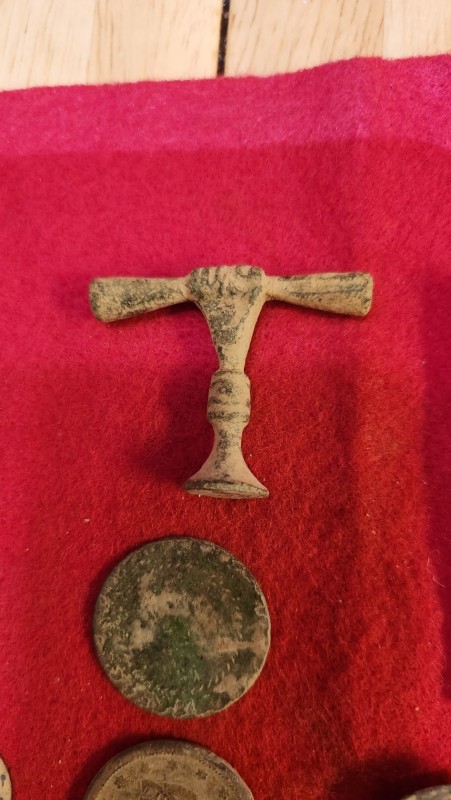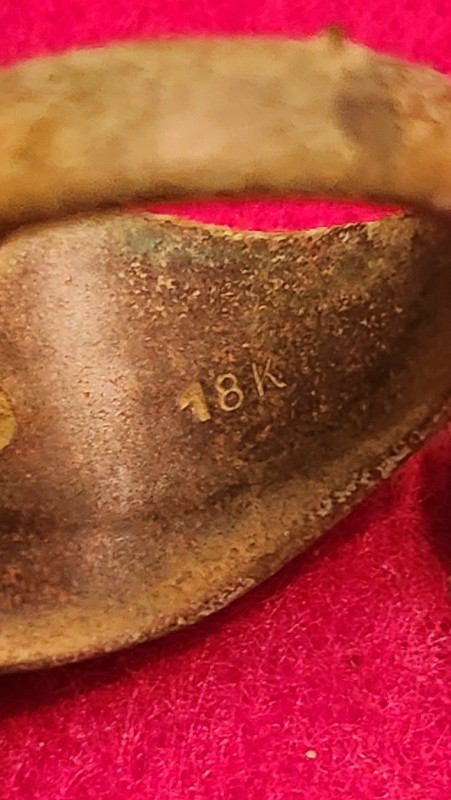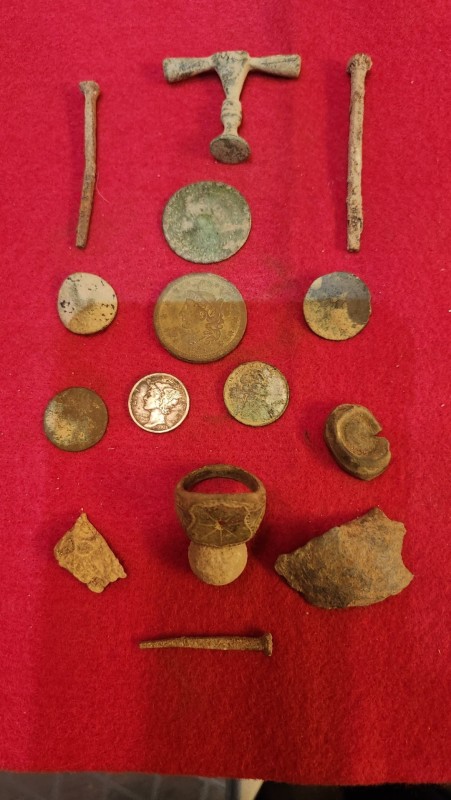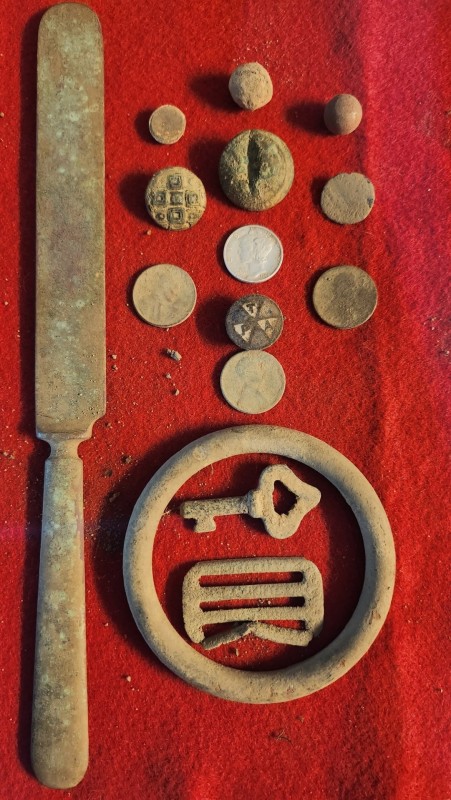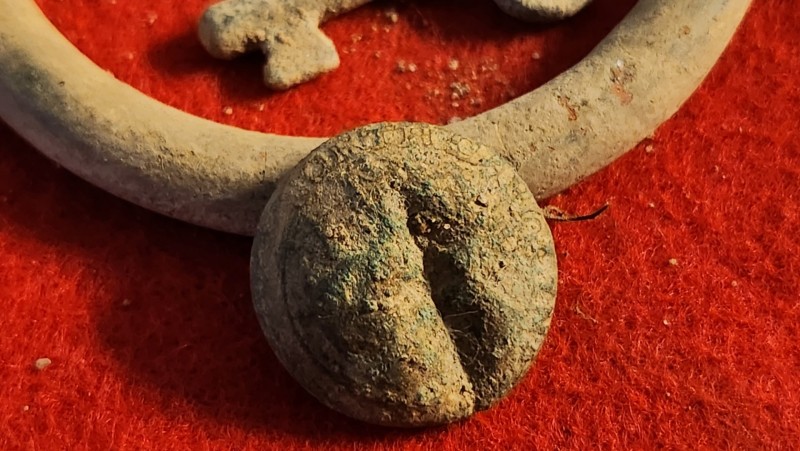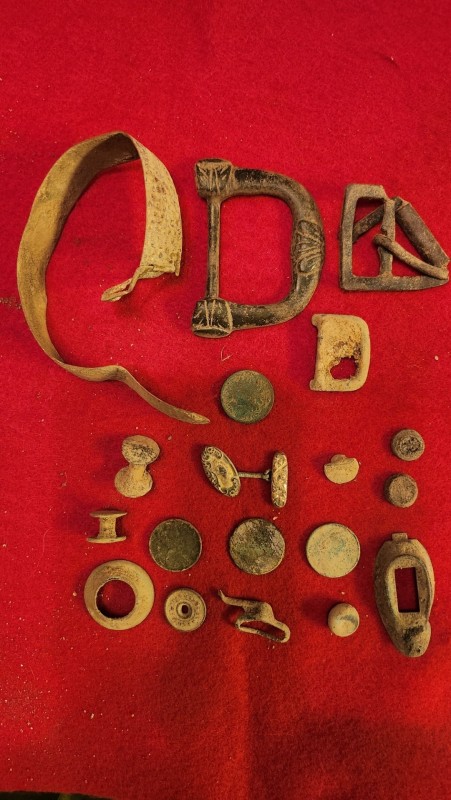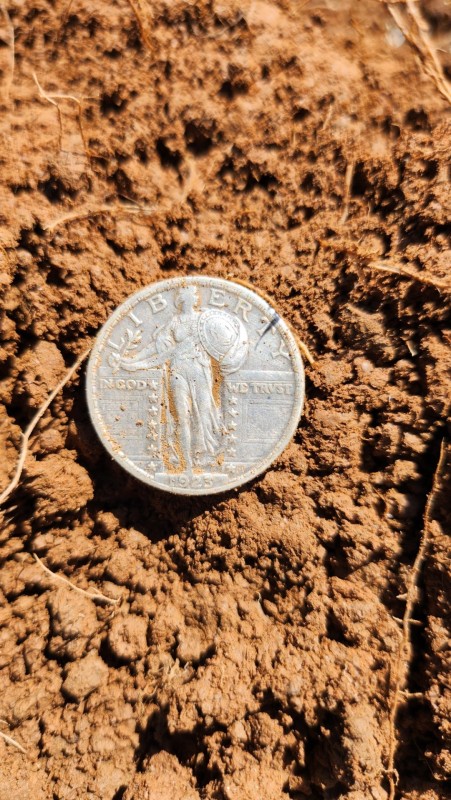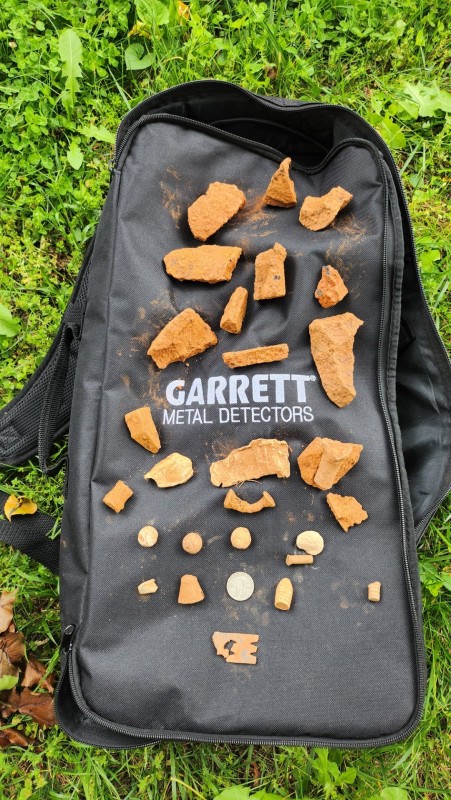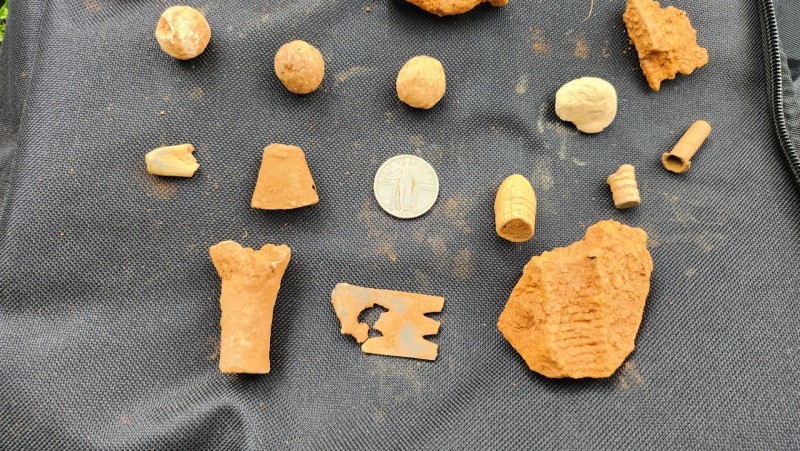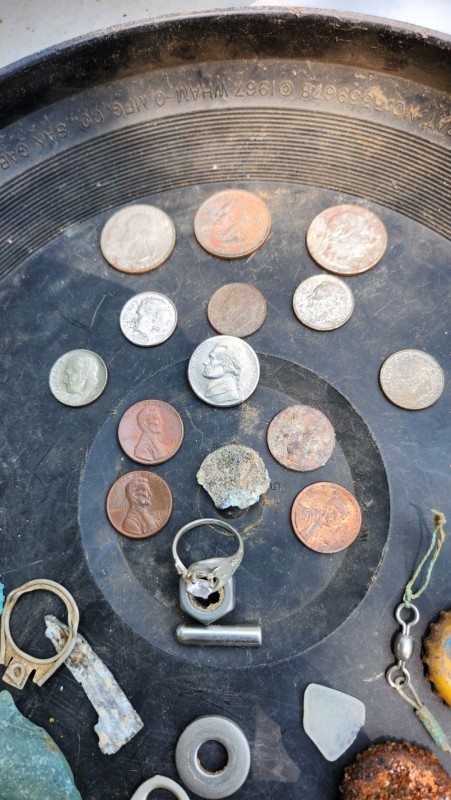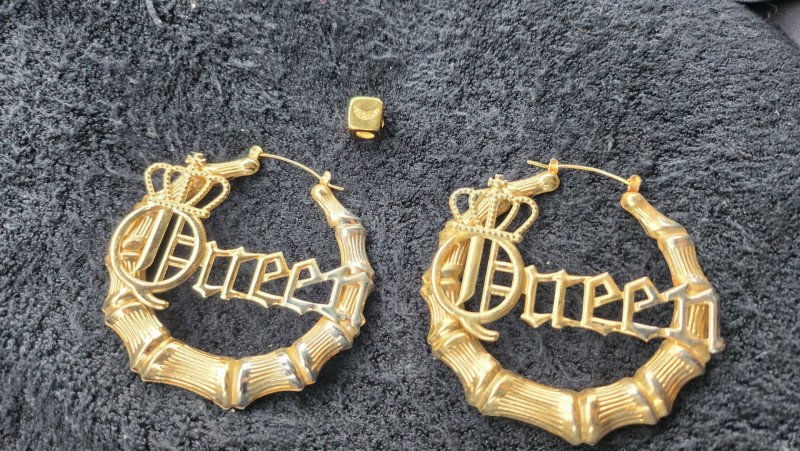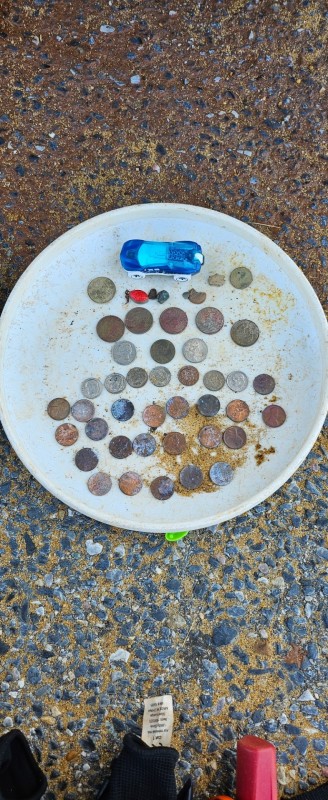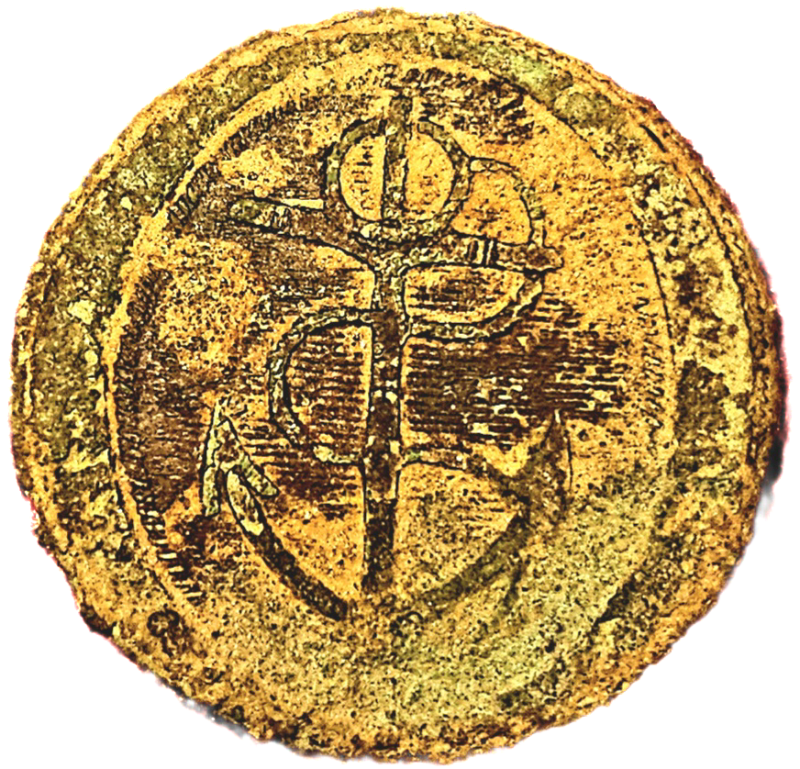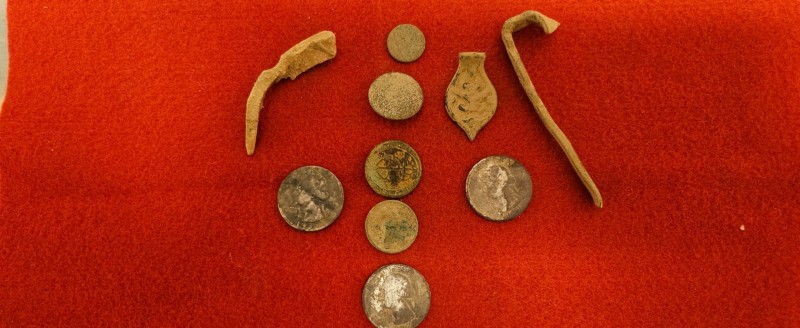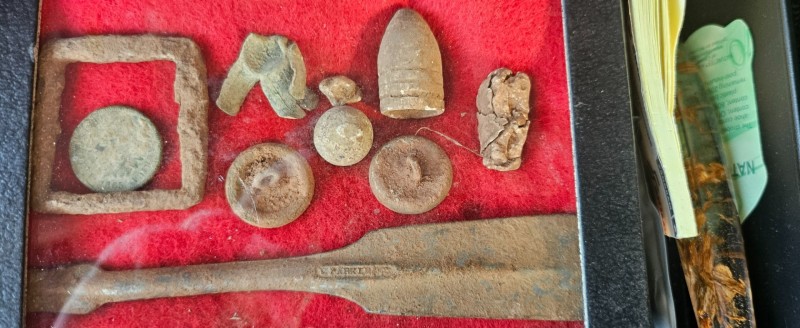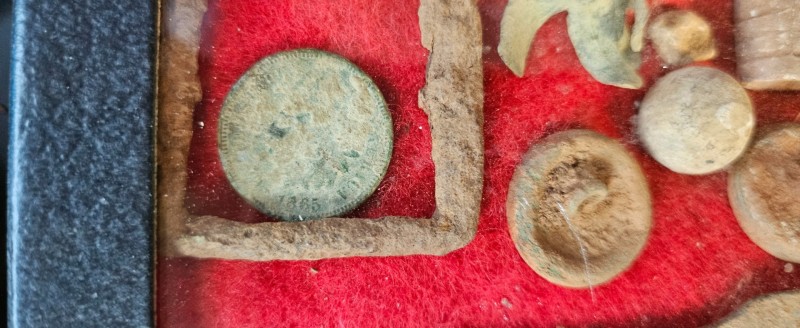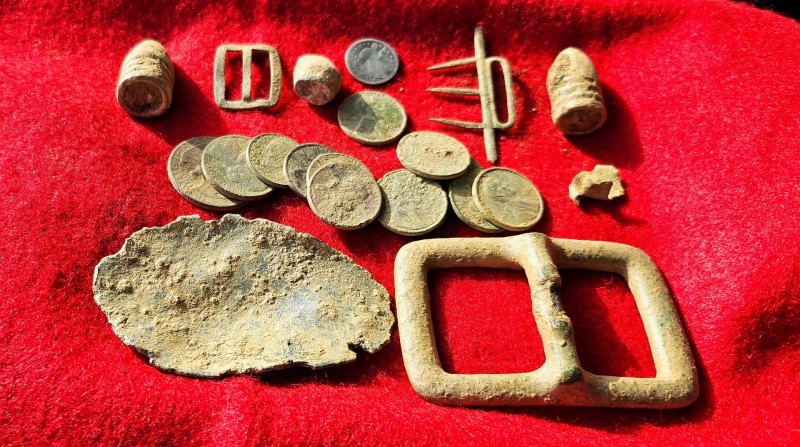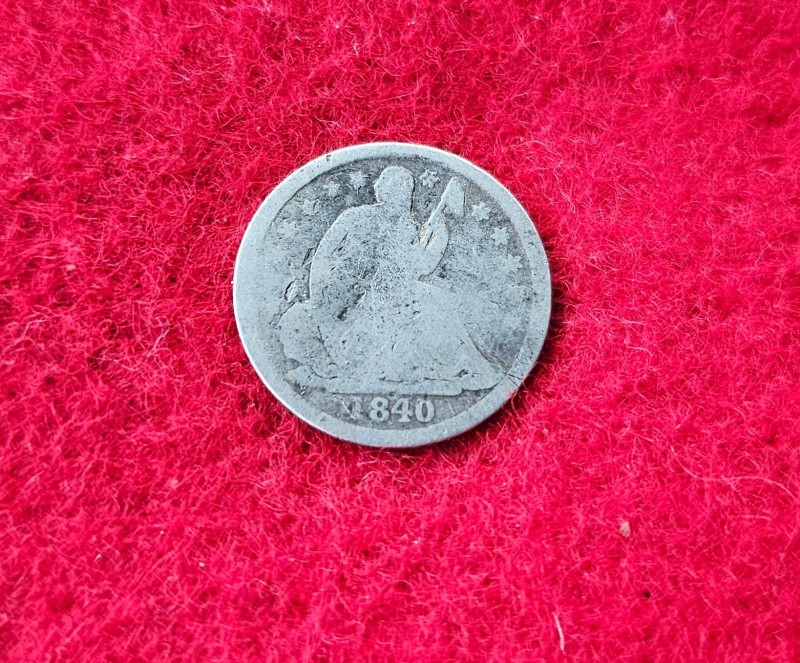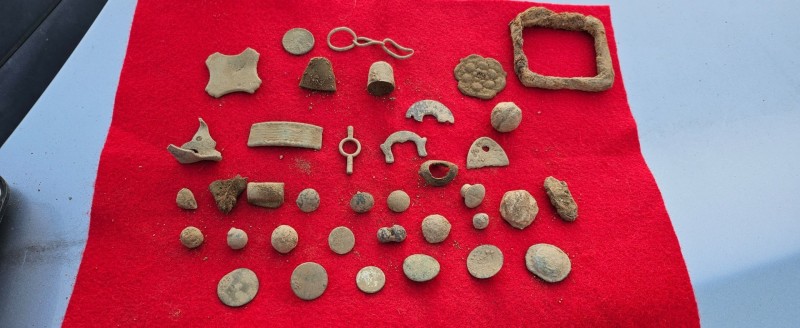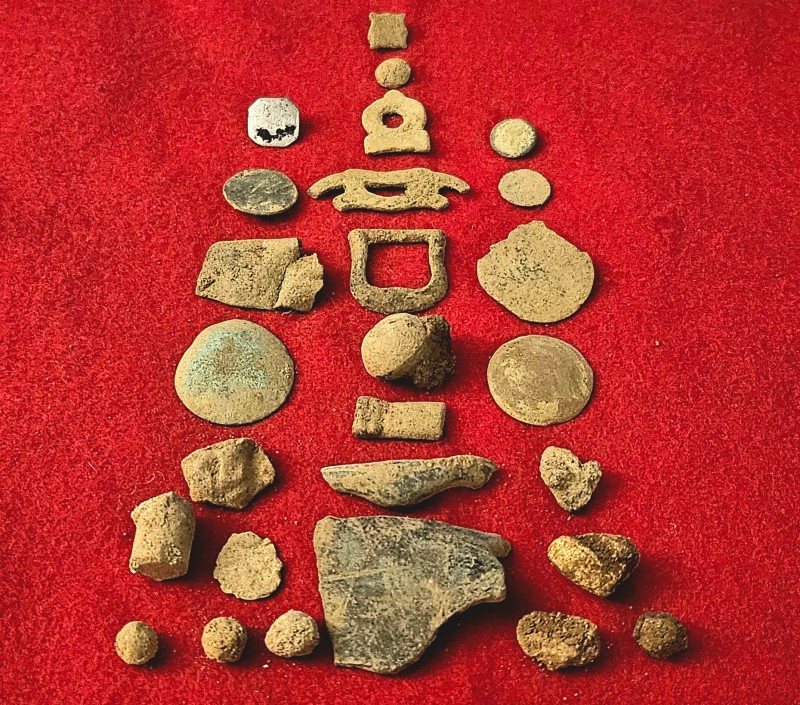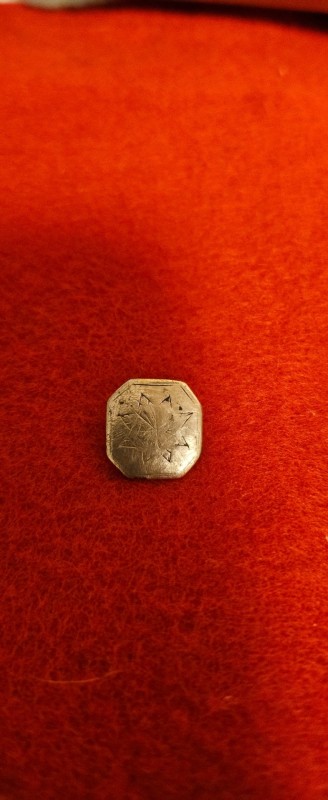-
Posts
6,118 -
Joined
-
Last visited
Content Type
Forums
Detector Prospector Home
Detector Database
Downloads
Everything posted by Chase Goldman
-
To answer your question more directly, the Deus 2 has a Magnetic ground accept/reject toggle setting in the ground balance menu of the beach modes only but @midalake, if I recall correctly, finds it to not be very useful and it ends up, for him, severely limiting depth performance in reject mode. I know that was the case pre-Version 2.0 Deus 2, not sure if he has fiddled with that setting since loading V2.0. He’ll probably chime in to clarify that.
-
What adjustments, if any, have you made from the default settings for audio (PCM, Square, High Square), the Audio Filter, tones (full, multi (2 through 5 tones), pitch , and salt sensitivity? You run Nox in horseshoe mode, do you run D2 in 0 Disc, negative disc? If D2 had a gold field/relic mode with salt handling it could possibly be better with black sand. I find relic to be the best mode for hot dirt, but it has no salt handling capability. I think Nox ground tracking is superior than D2 for rapidly shifting salt concentrations in surf/wash.Wash. I haven't played with the magnetic reject ground setting since ver 2.0 was issued, but it doesn't seem to do anything but limit non-ferrous depth with or without black sand present.
-
Agree. Conversely, in neutral soils (no salt, no mineralization), top end PI's have minimal depth advantage over top end VLFs like the Manticore or Deus 2 on coin or ring sized targets. So the OP's results are not surprising at all and wouldn't be surprising for many high end vlfs (i.e., the Manticore is not unique in this regard).
-

Looks Like M8's And M15's Are Starting To Appear
Chase Goldman replied to phrunt's topic in Minelab Manticore Forum
They should sell like hot cakes now. Good move Minelab! Marketing geniuses! -

Wm 09 Wireless Audio Module For Manticore
Chase Goldman replied to abenson's topic in Minelab Manticore Forum
The hard copy documentation actually included in the WM 09 package appears to be updated from the above and makes no mention of the WM 09 module being waterproof. That highlighted bullet text above does not exist. Based on that, the statement on the web page, and the fact that the WM 08 is also not waterproof, I conclude the WM 09 neither waterproof or weatherproof. -
I think he was specifically talking about the fact that this setup allows you to zip tie the WS6 holder to the mount. Although the mount will accommodate a remote, there is no obvious way to zip tie the remote to this (or any other) mount unless someone came up with a moulded mount that enclosed the remote like the WS6 holder does. Hmm...that would be a great idea.
-

What Can The Impulse AQ Do?
Chase Goldman replied to EL NINO77's topic in First Texas - Bounty Hunter, Fisher & Teknetics
Not sure what you meant by "interested to see what garrett does with this". They've already answered that with the Axiom...unless you meant to type "Fisher". Impulse AQ is a beach/water machine only. Because it is designed with salt cancellation, you can't balance it on land in its present form you and therefore can't use it for land-based nugget hunting. Fisher hinted at making a Gold hunting land variant but it appears the whole effort has just died. The last gasp was them trying to sell off whatever inventory they had of the pre-production special edition Impulse AQ units they still had lying around. Joe OBN above was doing a lot of the work for them addressing shortcomings in their battery design and battery mount design with his own hacks. As you can tell, he loves the pure raw power and performance of the machine but they have gone radio silent on it. I wouldn't hold your breath waiting for anything else to come of this. -
Welcome to the forum Newbe. Your best bet is to post this question in the Garrett Metal Detectors subforum on this site. In that subforum, detectorists who use Garrett detectors, and specifically the Apex, will be able to answer your questions specific to that detector. But before you post this question over there, it would be helpful to include some additional information with your new post such as the region of the US you are located and approximately where you plan to look for gold and whether you are simply looking for gold jewelry in a park or on a beach or natural gold in the ground as the best settings and mode will be dependent on which of those scenarios apply to you. Furthermore, experienced detectorists will be able to better weigh in on whether there is natural gold to be found in your area with your type of detector. Natural gold is not something that is found just anywhere and certain ground conditions and places that have been hit hard by detectorists looking for gold may mean that your detector, which is a good general purpose detector that can find gold but is not optimized for gold detecting and may be limited in its ability to detect gold in difficult conditions even if it is set up optimally to find it. Reality Check: Natural gold is a difficult target to detect in the ground because it is typically comprised of very small fragments that are hard to differentiate from other non-desirable targets such as iron bits, lead, and tiny pieces of brass or aluminum. It takes A LOT of patience and is best pursued after you have had some time to practice and getting used to how your machine responds to more commonplace targets such as coins, larger jewelry (rings, earrings, necklaces, etc), buttons, etc. Detecting for even these more commonplace but desirable items is also not necessarily straightforward or easy, especially if you are dealing with a lot of iron, aluminum, or other junk targets such as nails, cans and pieces of cans (such as ring pulls), fired bullets and brass casings or shotgun shells, fishing tackle, aluminum siding pieces, etc. There are ways to set up your detector to filter out some of these items, but not all and you also run the risk of filtering out a desirable target if you are not familiar with your detector's settings. My suggestion is that you read through your detector's manual - the electronic version can be downloaded here. Get some test targets like coins of various different denominations, jewelry, nails, pull tabs, aluminum cans, fishing sinkers, etc. and see how your detector responds to those targets in the various different modes by simply placing your test targets on the "clean" ground (ground that does not make noises when you pass over it after ground balancing - (see below)). The modes and the optimal targets those modes are designed for are described in the manual (hint: gold is probably best detected in zero or jewelry mode or in single frequency set to 20 khz). Just use the default settings for each mode, don't adjust anything, ground balance the detector per the instruction manual to cancel out the ground effects, and swing away at your test targets noting the audio and numerical response of the detector to each target. After you get used to your detector's response to surface targets, then detect your yard to see if you can find anything in it, then branch out to other areas such as a local park, ball field, or beach provided your local laws permit you to do so or ask a neighbor if you can detect their property, and get some addition experience with your detector. If you have not done so, obtaining some additional equipment is recommended. A hand digger, such as a garden trowel, screwdriver, or dedicated metal detecting hand digger can help with target recovery from the ground and there are ways you can recover the target without damaging yard turf. In less manicured areas, you might be able to use a shovel. If you are in a public area, there may be rules on what kind of digging implements are permitted to be used if metal detecting is allowed theres. A small handheld detector called a pinpointer also comes in handy for locating the target in dirt or in the hole that you have dug - items buried in the dirt can be deeper than expected, off center from the hole you dug, and are also not easily visible in the dirt if they have been buried for more than a few days. The pinpointer sounds off loudest when its tip nearest the target to help you find it quicker. Finally, it is handing to have some sort of pouch to hold your trash and treasure - it can be as simple as a tool apron or you can spend bucks on a dedicated metal detecting pouch where you can store finds, trash, your hand digger, and your pinpointer and anything else you carry along. There are no dumb questions. You are embarking on a new hobby and there is no way for you to know everything when first starting out. Welcome to the hobby, Good luck and Happy Hunting.
-

Going From .71 To 2.0 Update. Salt Beach With Black Sand.
Chase Goldman replied to midalake's topic in XP Deus II Forum
Dave, thanks for doing this comparison. Just a suggestion for the permanent record down the road (before you can no longer edit your original post), you might want to clarify in your original post which version was better for context. Your subject line is ambiguous and you never explicitly mention whether 2.0 or 0.71 is better in your post, just that you were impressed with the difference between them. I know most experienced users recognize you are probably talking 2.0 as being better but it is only implied not stated. A number of recent detector “updates” from various vendors have broken things that worked in prior versions, XP is not immune to this, so I never just presume the update is better. One way to misinterpret your post is that you were running 2.0 and reverted to 0.71 and felt it was better because some are testing 0.71 vs. 2.0 that way. TBH I wasn’t 100% sure myself by the way it was written. I only know that you mentioned in another thread you were running 0.71 for a week to get acclimated with it and switching to 2.0 so you could readily interpret the differences, but others who may have not seen that separate thread post wouldn’t know your methodology. -

Wm 09 Wireless Audio Module For Manticore
Chase Goldman replied to abenson's topic in Minelab Manticore Forum
Sorry, they didn't last. I'm sure more will be in stock soon. I agree that $139 price makes a lot more sense than $239. Not a bargain, but at least it's less expensive than the compatible wireless phones. -

Wm 09 Wireless Audio Module For Manticore
Chase Goldman replied to abenson's topic in Minelab Manticore Forum
Well there seems to be conflicting information from Minelab regarding whether the WM 09 is waterproof. From: https://www.minelab.com/accessories/wm-09-wireless-audio-module -

Wm 09 Wireless Audio Module For Manticore
Chase Goldman replied to abenson's topic in Minelab Manticore Forum
Thanks, Andrew. I could not find it on their site until I changed WM09 to WM 09. They are still in stock. -

Wm 09 Wireless Audio Module For Manticore
Chase Goldman replied to abenson's topic in Minelab Manticore Forum
It's an assumption, Chuck, but is based on the verified fact that ML is using the Nordic Bluetooth LE chipset and BT 5.2 compatible radios in their FCC filings and the headphone user manuals. We know they aren't using any flavor of APTX, because if they were, licensing would require them to reveal the APTX trademark. It could be FastStream which has similar latency to APTX-LL but with lower audio fidelity. The LC3 codec is the only BT codec that has superior low latency 20-30ms) to APTX-LL (30-40ms) or FastStream. Unlikely they are proprietary codec/platform such as that used in Minelab's separate low latency Wi-Stream radios as only the BT LE radio transmitter is mentioned in Manticore, Nox 700/900, and Xterra Pro specs and FCC filings and a separate Wi-Stream transmitter was used on tge Nox 600/800. I don't have an actual latency number but based on the above, it's at least as good as or likely better than APTX-LL (i.e., LC3). That's the basis for my statement in the previous post (p.s., I hedged and modified my previous post to add the word "likely" since we have no published latency spec numbers on the latest ML detector wireless audio, thanks for keeping me honest, Chuck). -

Wm 09 Wireless Audio Module For Manticore
Chase Goldman replied to abenson's topic in Minelab Manticore Forum
Well, I did mention that as an option in what you quoted but "better" than what option and in what respect: price, performance? They're certainly the least expensive option. And while latency is not the issue, plug-in transmitters have some minor drawbacks I discuss further below. The options above aren't listed in order of any preference, btw, because it's really something everyone has to figure out for themselves. Ideally, it would be nice not to have to add additional wireless transmitter claptrap to a detector that already has a low latency wireless transmitter installed that has less latency than BT APTX-LL by spec. But ML locked it down to only be compatible with their overpriced accessories and while the supplied headphones work fine for the most part, some have complained about their audio frequency response and wind noise, while others complain about lack of situational awareness while wearing them. They are also NOT waterproof or even weatherproof. So here we are. ML offers up the expensive WM09. BTW I personally have no issues with using either self-contained wireless phones or plugging into a wireless receiver that I can simply tuck away. As long as I'm untethered from the detector, I'm happy. One benefit with the tuck away receiver is that you can conceal it from the elements and protect it from weather. If your wireless phones are not weatherproof (most aren't) you may be out of luck unless you are wearing a rain hood. Regarding APTX-LL transmitters plugged into the headphone jack on the detector, as I said, latency is not the issue but there are minor drawbacks. Unless you have small, rigid transmitter with an integrated plug, you have to figure out how mount it without having it flop around, it's another thing you have to charge, and, finally, I have not seen any weatherproof transmitters so if you get caught in the rain you may be out of luck or have to improvise a way to keep it from getting wet. Like I said, these are all minor things but wort mentioning when considering different wireless options. -

Wm 09 Wireless Audio Module For Manticore
Chase Goldman replied to abenson's topic in Minelab Manticore Forum
Yep. We've just been waiting for them to release the inevitable ridiculous price point. Thanks for reminding me about it, Andrew. Doing some web diving I found this: From this website it looks like $229US MAP. Ugh. I've also seen $249AUS. Won't know for sure until more dealers start to advertise for pre-orders and no release date so far. If that's a real MAP, not surprised based off the WM08 price, but it's $200 more than it should be. At that price, if I needed an alternative to the ML proprietary phones, I'd just convert the ear cup on the Minelab wireless phones that contains the wireless receiver electronics and headphone jack into a WM09 home brew hack. You can even buy a second pair of ML wireless phones to hack for less than the WM09. (I've seen the ML85's advertised for as low as $114). Or go with the APTX-LL transmitter plugged into the M-core headphone port as many have done and APTX-LL phones or an APTX-LL receiver that can accept wired phones. These transmitter/receivers run about $30 each. Or you can go with Quest or Garrett wireless systems. Bottom line there may be a lot of less expensive options than thw WM09 to untether while using 3rd party phones. We'll see where ML ends up on the price point. -

Avantree Interested In Hearing From You
Chase Goldman replied to Wiggins's topic in Detector Prospector Forum
A weatherproof version of the Torus (or over ear phones or neckband anchored earbuds) would be great. Also, I have proprietary wireless metal detecting equipment that is not necessarily easy to plug a transmitter into the headphone jack because it is a waterproof, multi-pin connector. So having a Torus or nechband phones with an aux input jack would be welcome.- 78 replies
-
- minelab gpz 7000
- headphones and audio
-
(and 1 more)
Tagged with:
-

Just Picked Up The Full Deus2 Control Box.
Chase Goldman replied to George Kinsey's topic in XP Deus II Forum
Congrats. It's a little more flexible in terms of being able to manage multiple custom variants of your favorite base factory programs. And the X-Y graphical display is interesting. Performance is unaffected either way. -

A Look Back At 2023
Chase Goldman replied to Chase Goldman's topic in Metal Detecting For Coins & Relics
I like that - good one VL! -

Is It Just My Impression? Coil Impact
Chase Goldman replied to raziel900's topic in XP Deus II Forum
The final back and forth really didn't really help shed any additional light on the OP's question. There are undoubtedly changes that are not necessarily being documented, but debating the nature and extent of those known unknowns is non-productive. It should be sufficient for people to simply relate their experiences post update and not unreasonable to connect new behavior to the update. Conversely, its completely valid for someone else to state they are not seeing that behavior cited and to personally conclude nothing has changed. If there is no objective evidence (video, test data) presented then debating those different experiences is non-productive. Let's move on. -

A Look Back At 2023
Chase Goldman replied to Chase Goldman's topic in Metal Detecting For Coins & Relics
Ha ha. Not yet. May do some beach detecting if we get major erosion from a winter Nor'easter. We have one coming this weekend. Otherwise, that will have to wait until April/May. It's all ready to go! -

When Your Wife Tells You To Go Detecting, Just Go!
Chase Goldman replied to CPT_GhostLight's topic in XP Deus II Forum
Correct, it also says 1/10 oz on the coin which helps avoid having to do the math, too. Not being good at math, I cheated and that's how I came up with 0.1 oz in my previous post. That would be great, but it looks from the photos to be gold plated brass or some other low value base metal. Also, the 87 TID might indicate copper or brass base, as well. Let's see what CPT comes up with. Nevertheless, gold coin pendant is a great find. -

When Your Wife Tells You To Go Detecting, Just Go!
Chase Goldman replied to CPT_GhostLight's topic in XP Deus II Forum
Fantastic CPT. It's fun to be surprised even after the hunt is over, and gold to boot. Congrats! Those Chinese Panda Gold Bullion Coins are popular for gold investment and as jewelry pieces like yours. Even though its chewed up, the spot melt price is just over $200 today for that 0.1 oz coin. So great start to 2024. -
I retired from the rat race in 2023 which naturally opened up a lot more time for metal detecting. I didn't know what to expect for 2023, but I did figure that I would at least get more opportunities to detect which hopefully would translate into more quality finds than in previous years. It turns out that was case, but what really made 2023 enjoyable was not just the finds but the opportunity to try out different things and to hang out more with my detectorist buddies. Especially partnering up with Bob (@F350Platinum) who is just constantly pillaging the Northern Neck of Virginia with new finds and permissions. I was fortunate to meet Bob 3 years ago after he started posting his yard finds on the forum. He was really just starting out and while I knew he was aware of the history behind his amazing finds, I am not sure he realized at the time just what a detecting paradise he had at his doorstep. I know a lot of folks who would consider just about everything he found on his first few hunts as bucket listers because they would not have ready access to detect such historic relic laden areas. As a Northern Virginian city dweller I had little to offer in terms of reciprocation in terms of permissions and sites but I did know detectors and how to detect relics and met up with him to detect and share my knowledge of detectors, history, and relic hunting. The mentor soon became the mentee as Bob's opportunity to frequently detect, his rapport with the local landowners, and his research and IT skills soon lapped my abilities and now I am just thankful we became friends and he let's me tag along with him at his permissions. Anyway, with that backstory out of the way, on to early 2023. We started out hitting some of Bob's sites that he has had access to for a couple of years. Happily pulling out whatever we hadn't already found or that were turned up in the plowed fields. And as per usual, we ran into one of the landowner farmers who were out and about on their properties. An offhanded comment to that landowner and low and behold Bob made another connection and a potential permission to a farm we had been eyeing for some time. Off to a new permission and all the excitement that comes with it. We've posted our finds on these sites before so not going to bore you all with that, suffice to say, I found some bucket listers and finds that I have never before recovered including a pipe tamper, a brass men's ring stamped 18K, and a North Carolina CW button and the largest spectacle buckle I have dug (though only partial). Bob snagged A LOT of silver coins from the "front yard" of the home site. It was supposedly pounded previously, but the site was challenging with lots of iron and other junk and we felt that in this case, the latest D2 detector technology (fast recovery, multifrequency) provided an advantage vs. those who had gone years before us, probably with slower or less discriminating machines. We were rewarded and had a great time visiting that site throughout the year and anticipated Fall harvest to access fields that were unavailable to us at that time. Bob and I attended a group hunt we both attended the prior year that was fun and productive. This year, not so much. Bob managed a CW Eagle button and, I managed...nothing. I was focusing on learning my new Axiom PI detector and also testing out a new smaller coil. I could have exploited some previous minie ball hot spots, but decided to not limit myself and we explored a large portion of the farm. It happens and the Axiom proved itself later at a bigger group hunt in hot soil. That was Diggin' in Virginia (DIV) at a new site that was the location of a running artillery and infantry battle of the Civil War called the Battle of Freemans Ford which was a tactical water crossing of the Rappahannock River. Union Artillery and Infantry units engaged a Confederate supply column that was being protected by a number of Confederate regiments. The Union units were routed back across the river but the Confederates took a lot of shelling from the Union batteries on the high ground across the river. A ton of artillery shell fragments, fuses, sabot, and unexploded ordanance were recovered as well as other typical CW relic items such as plates, buttons, minie balls, etc. Since the site was adjacent to the river, it also contained a number of old Colonial, 19th and 20th century former home sites. I recovered a number of shell fragments, sabot, a fuse, and small arms projectiles with my new Axiom, but one non-CW-period find was my favorite. A 1923 SLQ in excellent condition. Probably dropped exactly 100 years prior. The Axiom proved itself that day and my GPX found a new home with another detectorist. Over the summer, during the traditional relic detecting hiatus (the fields are planted, the bugs are out, and the sun is high), I did some beach detecting on the Chesapeake Bay and also met up with Bob a couple of times at his local "beach" haunt at Colonial Beach VA. Found some bling and a lot of quarters and yet another beached Sacagawea dollar coin (weird) and generally had a great time soaking up some rays and talking to the local beachgoers. Sometimes getting some more leads to permissions in the general area. When fall finally came around, we some of our old haunts. Didn't expect too much because the sites had either been minimally productive or we had pounded them to death. In that context of low expectations I had one of my best days ever. Three 1930's silver quarters and an Bob snagged an eagle button, but nothing else out of a traditionally stingy field so we moved on after a couple of hours. The next field we had pounded multiple times but hit the known hot spot areas. We weren't getting much other than lead bale seals until we hit a known iron patch where we started pulling out various old flat and ball buttons and other pieces of brass. I then finally pulled an unfamiliar two-piece button with an anchor on it. I knew it was some sort of Navy button or possibly even a civilian decorative button until I did the research and found it to be a British Naval Officer's button from the late 1700's to early 1800's. In context, it makes sense. The area was raided by the British during the war of 1812 and also there may have been colonists who were former British Naval Officers who lived there. Anyway, for me this is a bucket lister in the sense that it is potentially linked to British military action in the area during the war of 1812. I also got to detect some sites up north in central Virginia, Pennsylvania and Maryland and scored some silver, copper, brass, lead, and pewter Colonial spoon bowl. Bob got some additional intel regarding one of our sites about a potentially unexploited former home site. It was in a field in which we did not have previous access due to crops. When the crops were finally harvested, Bob let me know, we met up and we "attacked" the area and were successful in finding the site. We hit that area twice and it was very productive. Bob got a 1798 Largie (a bucket lister for me is recovering ANY pre-1800 minted US coin, silver or gold would be a bonus). I was very jealous of that because even though I was seemingly pulling relics from the ground at will, I could not get my coil over any coin. Regardless, it was a great couple of outings and stood out to me because of the sheer number of relics but also because, even though I was not able to snag a coin, I was able to snag silver in the form of a very old, patterned cufflink. We capped off the year with a hunt at an initially promising new site that coughed up a number of colonial buttons, some oddities (including an unexpected Eagle GS button), and we each somehow managed to snag Merc's in the same area to finish off the hunt with some silver, which is always nice. My final hunt of the year turned out to be the capper for me, and hopefully, a sign of good things to come for 2024. It was an especially good year for silver for me. At least 4 silver quarters, a number of silver dimes, a silver 1840 Seated Liberty half dime (my first), and the silver cufflink. We hit a field that had iron but had only given up a few keepers. I noted to Bob that I was not ready to give up on it, though we both had low expectations based on our previous visit there. Bob and I started to hit areas that we had not detected previously and hit the iron patches hard. A few brass relics started to pop and then I hit a solid 91 that did not waver even after I did a 360 turn. I thought to myself, well at least I am going to dig a silver or clad dime. I flipped the plug, pinpointed and flipped out some more dirt and silver DID pop out of the hole, but not what I thought it was going to be. I thought, wow its a quarter or half, by sight, but that didn't jive with 91 TID. I looked closer at the coin design details and realized that I just popped my first 2 Reale Spanish silver - 1793 King Charles IV (stamped as Carolus IIII on the coin) with a Lima, Peru mintmark. If that coin could talk and tell the tale of how it ended up in a Virginia farm field, I would have loved to hear it. Called over to Bob, and even though it was only 10am, told him my hunt was over and I was going home because I knew I couldn't top it for the year, much less for the rest of the day. I might have dinged it with my digger, but in my defense, I thought I was recovering a dime. It happens. I stuck around though, for the rest of the day, and we pulled some more brass and then called it a year! In 2024, my quest for my ideal VLF IB detector has pretty much ended with the Deus 2. I still dabble with other machines but if I am serious about the dig, it's going to be the Deus 2. ALL my quality finds this year were recovered with the Deus 2 or the Axiom. Thanks to Bob for some great detecting adventures and friendship! Goodbye 2023, had fun. Hello 2024, can't wait! Wishing everyone great digging in 2024.
-
It's not proportional. The sensitivity to depth relationship is non-linear. It plateaus (i.e., the steepness of the curve significantly decreases) at sensitivity levels above 22 or so in my experience.


